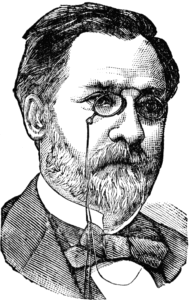 The Most Important Research Tool You’re Probably Not Using—Redux!
The Most Important Research Tool You’re Probably Not Using—Redux!
Recently, I was involved in a research study involving patients with familial hypercholesterolemia. FH is a genetic disorder characterized by extremely high cholesterol, and is generally treated with statin drugs. One key topic we struggled with was non-compliance—patients not taking their statins. Our most useful tool in finally understanding this issue turned out to be mindset models—perceptual lenses. One surprising finding: two previously undiscovered user segments emerged, each clearly defined by a cluster of mindsets.
After reviewing the transcripts and screening data, we noticed additional behavioral and demographic similarities among the people in each segment. So, by listening for mindsets, we were able to identify two distinct – and possibly very important – segments for further study, and significantly improved our understanding of compliance. This speaks to the power of mindsets as a market research tool, and that’s why I’m reposting one of my most viewed newsletters – somewhat edited and shortened:
The Most Important Research Tool You’re Probably Not Using.
Of all the posts I’ve written, the ones that get the greatest response are those on mindset models. This isn’t surprising—I like these tools for the same reasons as everybody else. They’re powerful, intuitive, quick to learn and easy to use. And yet, when I talk to marketers and fellow researchers about them, I often get a blank stare. So here’s why everybody should know about mindset models.
A lot of analytical tools are extremely complex. Examples include the Fogg Behavior Model, the Utility Trade-off Model and the Keller Brand Equity Model. I make frequent use of all of these — they’re invaluable. However, they take a long time to internalize and understand, and longer still to master their use.
Not so with mindset models. They can be described in a few minutes and, once explained, you’ll immediately know how to use them. It’s easy to build an extensive set of them; I’ve identified over 30 mindset models that I use regularly.
So, what do I mean by ‘mindset?’ My definition: a mindset is a system of perceptions and attitudes formed by circumstances, intentions, experiences and needs. Put simply, a mindset is how somebody perceives or relates to a situation. When you understand somebody’s mindset, you’re seeing the world from their point of view. That’s a powerful thing to be able to do, particularly if you’re struggling to understand your data, or if you want to look at your data with or a fresh set of eyes. A good metaphor for mindsets is lenses—when you look through the right one, everything comes into focus.
In addition to the other mindsets I’ve written about, here’s another one: possibility versus feasibility. Individuals who have a possibility mindset see situations in terms of what could be, paying little regard to what’s realistic. Those with a feasibility mindset focus on whether or not something can be done, and how.
Why is this important? Because, if you’re assessing new product ideas, mindset will profoundly influence interest level. For instance, early adopters of new technologies tend to have a mindset of possibility—they get excited about the promise of a new idea, and don’t get hung up on why it might not work. So, when communicating with early adopters, marketers should account for this. On the other hand, later adopters tend to have a mindset of feasibility, focusing on potential problems and shortcomings. That’s why they choose to wait to try, why marketers should probably not focus on selling new technologies to these consumers, and why communications aimed at them might do well to focus on a product’s proven track record.
It’s also important to be aware of these mindsets when conducting ideation or co-creation sessions—participants who can’t leave behind a feasibility mindset are unlikely to be able to contribute. So, if you’re recruiting consumers for such an event, a few attitudinal screening questions can greatly increase your chances of success. It’s also a good idea to include exercises to foster possibility thinking.
Making use of mindset models is easy—just get into the habit of listening for the role mindsets are playing in perceptions, attitudes and behaviors. If you’re having difficulty understanding people’s opinions, think about what their mindset might be. Remember that every mindset has its own logic, and if you can identify the operating mindset, points of view will start to make more sense. I have a checklist of questions I routinely ask myself to help focus on mindsets:
-
What mindsets are evident?
-
How are they shaping perceptions?
-
What behaviors are they driving?
-
What can they tell us about segments?
-
What are the implications for branding and tactics?
